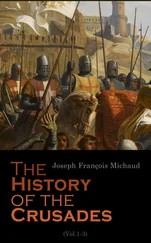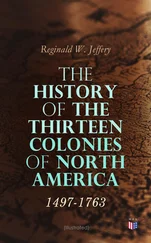But Liberia, in the proper use of the term, is applied to all the settlements along the West Coast of Africa that were founded by Colored people from the United States. It is the most beautiful spot on the entire coast. The view is charming in approaching this country, Rev. Charles Rockwell says—
"One is struck with the dark green hue which the rank and luxuriant growth of forest and of field everywhere presents. In this it respect it strongly resembles in appearance the dark forests of evergreens which line a portion of the coast of Eastern Virginia … At different points there are capes or promontories rising from thirty to forty to one or two hundred feet above the level of the sea; while at other places the land, though somewhatuneven, has not, near the sea, any considerable hills. In some places near the mouths of the rivers are thickly wooded marshes; but on entering the interior of the country the ground gradually rises, the streams become rapid, and at the distance of twenty miles or more from the sea, hills, and beyond them mountains, are often met with."
The physical, social, and political bondage of the Colored people in America before the war was most discouraging. They were mobbed in the North, and sold in the South. It was not enough that they were isolated and neglected in the Northern States: they were proscribed by the organic law of legislatures, and afflicted by the most burning personal indignities. They had a few friends; but even their benevolent acts were often hampered by law, and strangled by caste-prejudice. Following the plans of Granville Sharp and William Wilberforce, Liberia was founded as a refuge to all Colored men who would avail themselves of its blessings.
Colonization societies sprang into being in many States, and large sums of money were contributed to carry out the objects of these organizations. Quite a controversy arose inside of anti-slavery societies, and much feeling was evinced; but the men who believed colonization to be the solution of the slavery question went forward without wavering or doubting. In March, 1820, the first emigrants sailed for Africa, being eighty-six in number; and in January, 1822, founded the town of Monrovia, named for President Monroe. Rev. Samuel J. Mills, while in college in 1806, was moved by the Holy Spirit to turn his face toward Africa as a missionary. His zeal for missionary labor touched the hearts of Judson, Newell, Nott, Hall, and Rice, who went to mission-fields in the East as early as 1812. 106The American Colonization Society secured the services of the Rev. Samuel J. Mills and Rev. Ebenezer Burgess to locate the colony at Monrovia. Mr. Mills found an early, watery grave; but the report of Mr. Burgess gave the society great hope, and the work was carried forward.
The first ten years witnessed the struggles of a noble band of Colored people, who were seeking a new home on the edge of a continent given over to the idolatry of the heathen. The funds of the society were not as large as the nature and scope of the work demanded. Emigrants went slowly, not averaging more than 170 per annum—only 1,232 in ten years: but the average from the first of January, 1848, to the last of December, 1852, was 540 yearly; and, in the single year of 1853, 782 emigrants arrived at Monrovia. In 1855 the population of Monrovia and Cape Palmas had reached about 8,000.
Going south from Monrovia for about one hundred miles, and inland about twenty, the country was inhabited by the Bassa tribe and its branches; numbering about 130,000 souls, and speaking a common language. "They were peaceful, domestic, and industrious; and, after fully supplying their own wants, furnish a large surplus of rice, oil, cattle, and other articles of common use, for exportation." 107This tribe, like the Veis, of whom we shall make mention subsequently, have reduced their language to a written system. The New Testament has been translated into their language by a missionary, and they have had the gospel these many years in their own tongue.
The "Greybo language," spoken in and about Cape Palmas, has been reduced to a written form; and twenty thousand copies of eleven different works have been printed and distributed. There are about seventy-five thousand natives within fifty miles of Cape Palmas; and, as a rule, they desire to avail themselves of the blessings of civilization. The Veis occupy about fifty miles of seacoast; extending from Gallinas River, one hundred miles north of Monrovia, and extending south to Grand Mount. Their territory runs back from the seacoast about thirty miles, and they are about sixteen thousand strong.
This was a grand place to found a Negro state—a missionary republic , as Dr. Christy terms it. When the republic rose, the better, wealthier class of free Colored people from the United States embarked for Liberia. Clergymen, physicians, merchants, mechanics, and school-teachers turned their faces toward the new republic, with an earnest desire to do something for themselves and race; and history justifies the hopes and players of all sincere friends of Liberia. Unfortunately, at the first, many white men were more anxious to get the Negro out of the country than to have him do well when out; and, in many instances, some unworthy Colored people got transportation to Liberia, of whom Americans were rid, but of whom Liberians could not boast. But the law of the survival of the fittest carried the rubbish to the bottom. The republic grew and expanded in every direction. From year to year new blood and fresh energy were poured into the social and business life of the people; and England, America, and other powers acknowledged the republic by sending resident ministers there.
The servants of Christ saw, at the earliest moment of the conception to build a black government in Africa, that the banner of the cross must wave over the new colony, if good were to be expected. The Methodist Church, with characteristic zeal and aggressiveness, sent with the first colonists several members of their denomination and two "local preachers;" and in March, 1833, the Rev. Melville B. Cox, an ordained minister of this church, landed at Monrovia. The mission experienced many severe trials; but the good people who had it in charge held on with great tenacity until the darkness began to give away before the light of the gospel. Nor did the Board of the Methodist Missionary Society in America lose faith. They appropriated for this mission, in 1851, $22,000; in 1852, $26,000; in 1853, $32,957; and in 1854, $32,957. In the report of the board of managers for 1851, the following encouraging statement occurs:—
"All eyes are now turned toward this new republic on the western coast of Africa as the star of hope to the colored people both bond and free, in the United States. The republic is establishing and extending itself; and its Christian population is in direct contact with the natives, both Pagans and Mohammedans. Thus the republic has, indirectly, a powerful missionary influence, and its moral and religious condition is a matter of grave concern to the Church. Hence the Protestant Christian missions in Liberia are essential to the stability and prosperity of the republic, and the stability and prosperity of the republic are necessary to the protection and action of the missions. It will thus appear that the Christian education of the people is the legitimate work of the missions."
At this time (1851) they had an annual Conference, with three districts, with as many presiding elders, whose duty it was to visit all the churches and schools in their circuit. The Conference had 21 members, all of whom were colored men. The churches contained 1,301 members, of whom 115 were on probation, and 116 were natives. There were 20 week-day schools, with 839 pupils, 50 of whom were natives. Then there Were seven schools among the natives, with 127 faithful attendants.
Читать дальше












